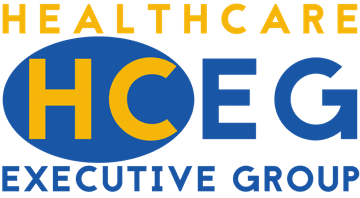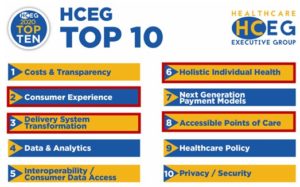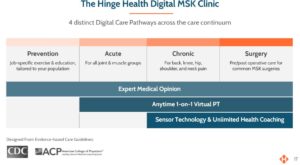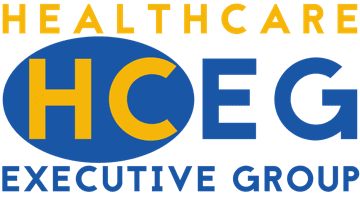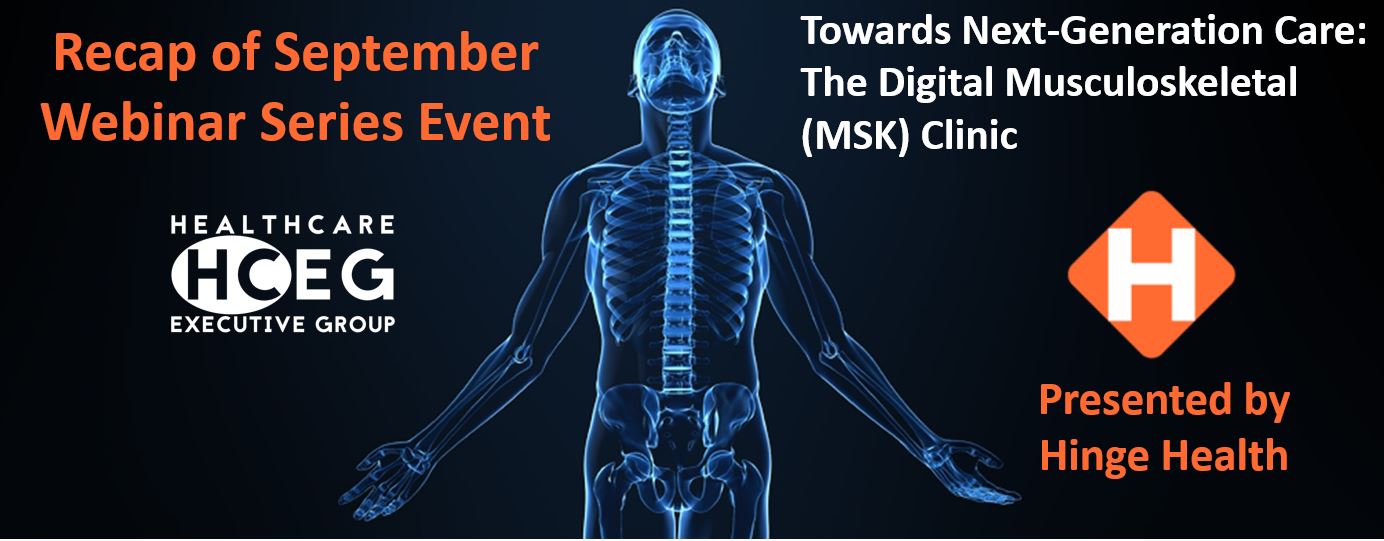
Currently, people with back and joint pain experience a fragmented approach to care. Whether it’s an acute injury, chronic pain, or surgery, members must contend with multiple providers and handoffs between those involved with providing a ‘whole person approach’ to care. From the individuals’ perspective, it feels like no one is looking at their health holistically or acting as their healthcare champion. And with many people increasingly working from home due to the coronavirus pandemic, challenges related to musculoskeletal conditions – increasing back pain and joint pain – are likely to increase.
Our September Webinar Series event was presented by Hinge Health’s CEO Dan Perez and addressed the following:
- Key MSK Challenges & Trends in 2020 and Beyond
- Fractured State of MSK Care
- Towards Next-Generation Care
- World’s Largest Digital MSK Cohort Clinical Study
This post is a recap of the webinar. Contact Hinge Health for access to the webinar recording
For more information on how a digital musculoskeletal clinic – covering the full continuum of care from prevention to post-surgery – can provide a one-stop-shop for health plans, employer groups, and provider organizations, reach out to Hinge Health.
Highlights from Towards Next-Generation Care: The Digital Musculoskeletal (MSK) Clinic
HCEG’s Executive Director Ferris Taylor kicked off the webinar noting how Hinge Health addresses 4 of the 2020 HCEG Top 10 list of challenges, issues, and opportunities facing healthcare leaders.
Dan Perez provided an overview of how musculoskeletal conditions continue to be the top health care cost driver and how MSK care will have the highest growth rate of any virtual care services over the next few years – and likely beyond. Dan went on to provide an overview of The Hinge Health Digital MSK Clinic, details on the four distinct Digital Care Pathways across the care continuum, and shared information on evidence-based care guidelines from the CDC and American College of Physicians.
RELATED: Spotlight on Musculoskeletal (MSK) Programs – Hinge Health
Chronic MSK Pain is Both Physical & Mental
Dan shared information, statistics, and Hinge Health insight on the Gold Standard for Addressing Chronic MSK Pain: a biopsychosocial approach that addresses three key components:
Biological Influence
How exercise therapy can help reduce chronic pain by up to 60%
Psychological Influence
How a belief in oneself often leads to lower pain levels – even 1 to 2 years after the initial intervention
Social Influence
How education and 3rd-party support can empower people to overcome chronic pain
Clinical Care Model Surrounding an Individual
The presentation continued with Dan sharing an overview of the clinical care model upon which Hinge Health’s care model is based. He shared a 1-minute video with webinar participants offering a real-world application of the Hinge Health solution.
The World’s Largest Digital MSK Cohort Study
Details on clinical outcomes from a study of 10,264 participants – validated by researchers at Stanford, Vanderbilt, and top consultants addressing key business questions – were shared:
- 4 out of 5 participants had meaningful improvement in pain reduction
- More exercise therapy and coaching resulted in more pain reduction
- 58% Reduction in depression and anxiety scores
- More than 2 out of 3 surgeries avoided in Year-1
The presentation concluded with key takeaways on how health plans, employer groups, provider organizations, and other healthcare stakeholders can help their members and patients.
Learn How Hinge Health Can Help Address Costly MSK Issues
To access the webinar recording and for more information on how a digital musculoskeletal clinic – covering the full continuum of care from prevention to post-surgery – can provide a one-stop-shop for members and health plans reach out to Hinge Health.
Our Webinar Series events are one example of how the HealthCare Executive Group helps to share information and promote collaboration between healthcare leaders, change-makers, and stakeholders. Consider joining our newsletter to stay abreast of challenges, issues, and opportunities of importance.
